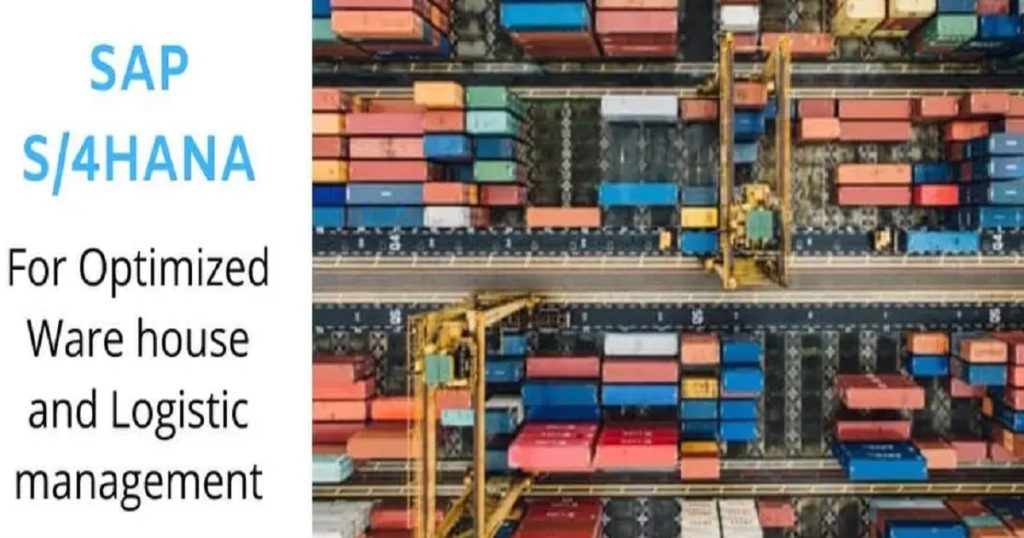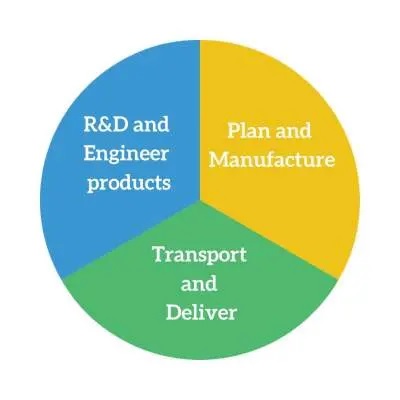SAP S/4 Hana: Intelligence In Digital supply Chain

Every logistic and warehouse management organization aspires to design, develop and deliver the product to the customers at the right time and right price. This involves a series of events that are to be orchestrated and followed by multiple iterations over and over to gain the expected results.
In order to obtain the desired results, it is a requisite to have intelligently coordinated functioning solutions.SAP having numerous sap s/4 Hana in warehouse management through the digital supply chain available which helps the organization to build the supply chain digitally.
This blog post helps a broad understanding of the requirement for niche sap solution depending upon the requirements by evaluating the needs and deliver the apt sap s/4 Hana solution for warehouse management organization based on their requirements in wholesale distribution
The three important processeses in product-based enterprises are:
- Research and Development.
- Planning and manufacture
- Transport and deliver

1) Research and development (R&d)
This is a very important phase of the whole process where developing particular end products by analyzing the requirements, managing high specifications, formulating the perfect solution for wholse sale distribution industry and further carrying information digitally in supply chain central systems.
All these processes are handled by sap recipe development and it streamlines the formulations, real-time simulations, determines the equipment requirements and other R&D related needs.
Collaboration with suppliers and customers in real-time is requisite for R&D.Sap s/4 Hana cloud for intelligent product design provides the platform to collaboration between suppliers and customers for such needs which channelize the data, documents, bill material and also have a workflow to monetize data or the document movements.
Visualization of the product is an important aspect of designing a product. There is a drastic difference between visualizing a materialistic product and an end product in a sap solution.
2) Planning and manufacture for optimized supply chain
Providing the product at the right time, price and place in terms of customer requirements need for a well-oiled Digital supply chain. It involves the following:
Providing the product at the right time, cost and position of customer requirements. it requires a well-managed digital supply chain. It entails the following
- Developing precise statistical forecasts for the demand
- Ensuring a better level of inventory to reach the needs of customer demands and requirements.
- Pre-planned optimal business plan to assure revenue growth and market share.
- Automate manufacturing processes efficiently for resource management manufacturing products of good quality.
- Having insights into the manufacturing data insights to assure lower operational costs of manufacturing and production over plants.
3) Transport and Delivery for optimized yard logistics
Transportation and delivery of goods to the customer poses its own challenges to every organization. It varies from organization to organization depending on the type of products, customers, demand, geographies, transportation modes, and distribution network. The following three key areas are relevant in this context:
The Transportation and delivery of the components have their own challenges for each and every organization. The challenges are for individual enterprises are different predominantly depending on the type of products, customer, demand, a network of distribution. The following are the key area
- Managing the overall transport operation of units in the yard
- Coordinating the manufacturer’s end products in the warehouse and shipping them effectively.
Sap yard logistics solutions act as an intermediate between the distribution and transportation operations and the warehouse. It has the ability to streamline the planning, execution, and settlement of the tasks in yards with holistic integration with the back end process. With the assistance of IoT and data captured by it. It’s simple to adapt yard processes for individual modes of transportation means and yards. It utilizes workforce and assets. It can be integrated with sap extended warehouse and transportation management.



